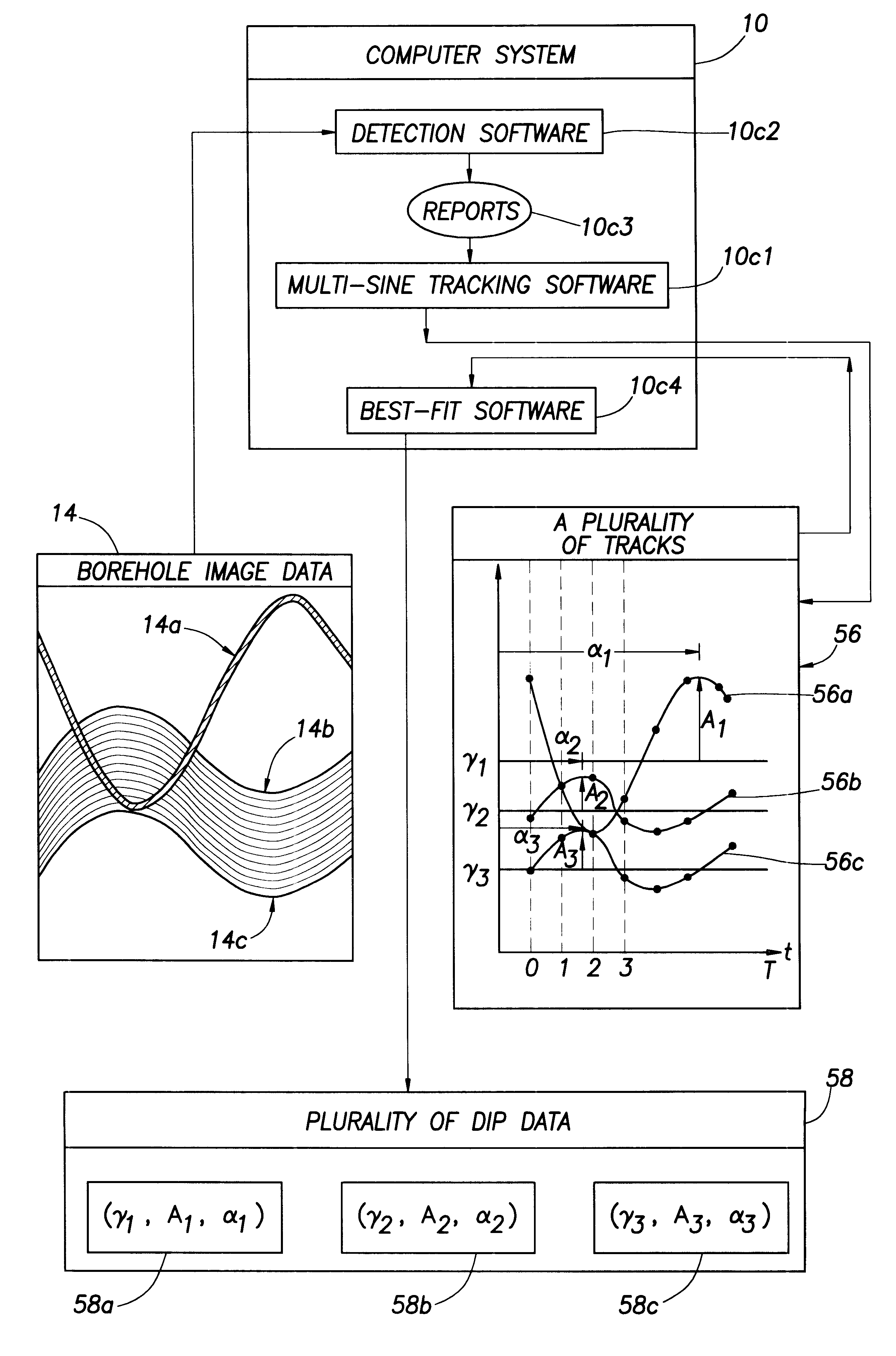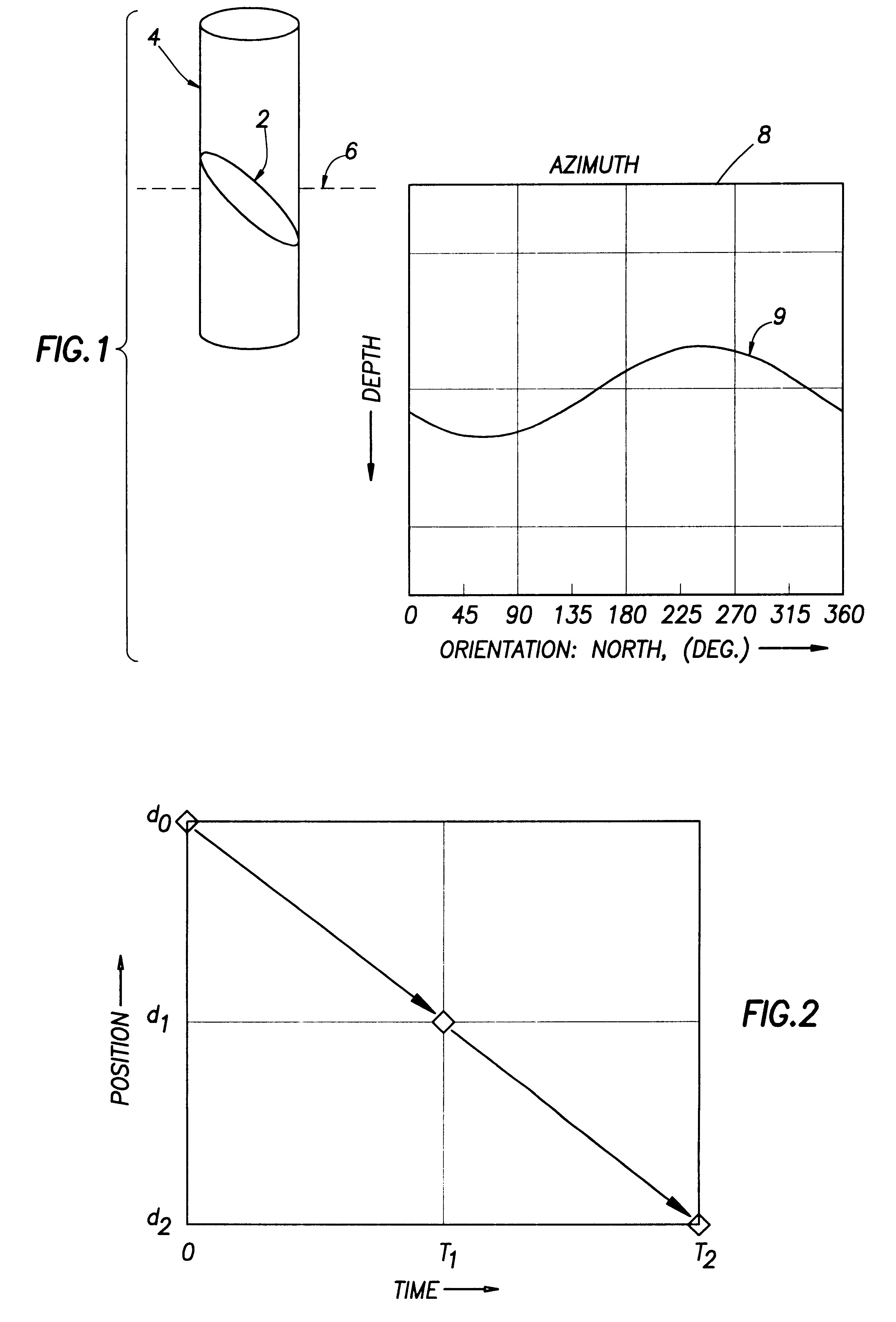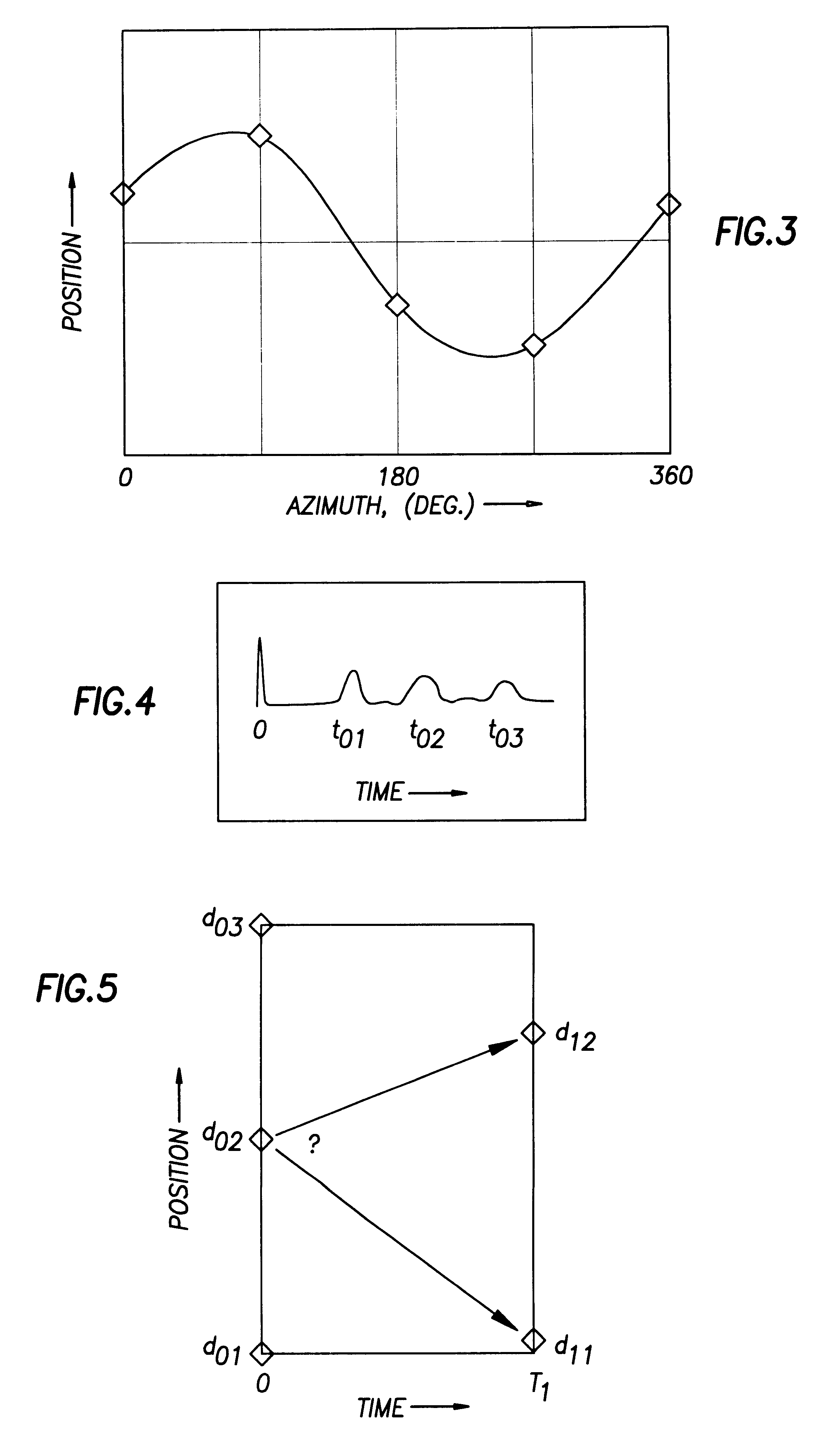Method and apparatus using multi-target tracking to analyze borehole images and produce sets of tracks and dip data
a multi-target tracking and image analysis technology, applied in seismology for waterlogging, using reradiation, instruments, etc., can solve problems such as spurious reports, tracking problems implemented around boreholes, and inevitably returning to themselves, so as to improve the resolution of ambiguities
- Summary
- Abstract
- Description
- Claims
- Application Information
AI Technical Summary
Benefits of technology
Problems solved by technology
Method used
Image
Examples
Embodiment Construction
The method and apparatus of the present invention uses modified Multi-Target Tracking concepts to generate a plurality of tracks (sets of connected track points), representing dip events in borehole imagery from a borehole penetrating an earth formation, and a corresponding plurality of dip data, defining the "best fit" sine curves to a plurality of tracks, in response to a set of "borehole image data".
Referring to FIG. 8, an apparatus for generating the "borehole image data", representing images of resistivity variations on a borehole wall, is illustrated.
In FIG. 8, as noted earlier, the method and apparatus of the present invention generates a plurality of tracks and a corresponding plurality of dip data in response to a set of "borehole image data". The "borehole image data" (representing images of resistivity variations on a borehole wall) is generated by a borehole imaging tool, and that borehole imaging tool could be, for example, a "Formation MicroImager" (FMI) borehole imagi...
PUM
 Login to View More
Login to View More Abstract
Description
Claims
Application Information
 Login to View More
Login to View More - R&D
- Intellectual Property
- Life Sciences
- Materials
- Tech Scout
- Unparalleled Data Quality
- Higher Quality Content
- 60% Fewer Hallucinations
Browse by: Latest US Patents, China's latest patents, Technical Efficacy Thesaurus, Application Domain, Technology Topic, Popular Technical Reports.
© 2025 PatSnap. All rights reserved.Legal|Privacy policy|Modern Slavery Act Transparency Statement|Sitemap|About US| Contact US: help@patsnap.com



